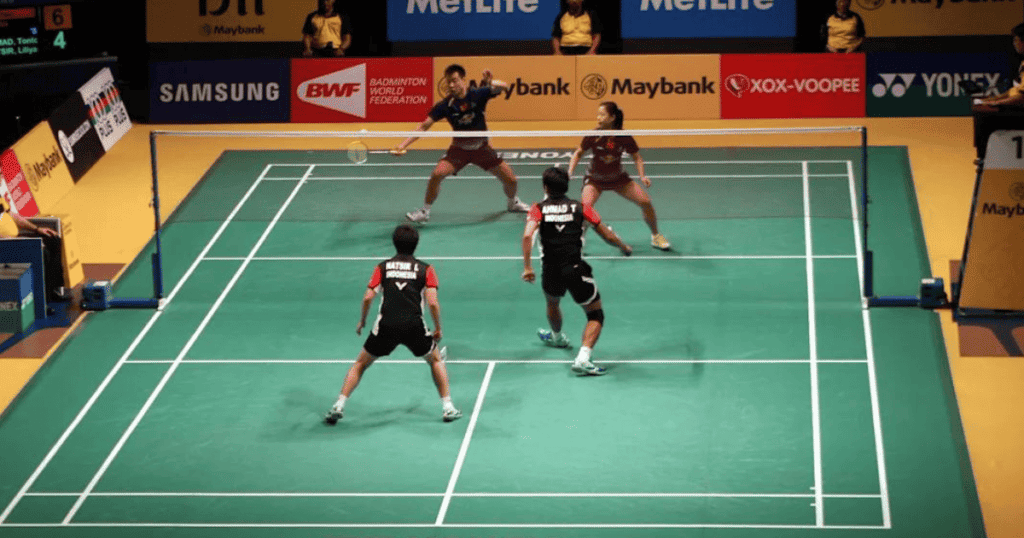More Than Just a Playing Field
When we think of racket sports, the imagery of players, rackets, and fast-flying shuttlecocks often come to mind. Yet, beneath all this action lies the foundation of every match – the badminton court. What exactly is a badminton court, and why is it essential?
Definition:
A badminton court is the rectangular playing surface used for the sport of badminton, marked by specific dimensions and boundaries.
Now that we have our definition in place, let’s dive deeper.
The Anatomy of a Badminton Court
At its core, the badminton court is a rectangle, usually made of wood or synthetic flooring suitable for swift footwork and smooth shuttlecock bounces. Its dimensions are standardized at 13.4 meters in length and 6.1 meters in width.
A net, strung at a height of 1.55 meters, divides the court into two equal halves. Each half further splits into two primary zones: the singles’ and doubles’ playing areas. This division is crucial because while the length of the court remains constant for both formats, the width differs. For singles, the court’s width is 5.18 meters, and for doubles, it’s the full 6.1 meters.

Why These Specifics Matter
Every inch of the badminton court serves a strategic purpose. For instance, a player may use the back boundary line to serve high and deep, pushing their opponent to the rear and opening up the front court for drop shots. Conversely, in doubles, the wider court means players need to be even more vigilant, covering more ground and being wary of opponents’ shots aimed at the alleys.
The Court’s Influence on Gameplay
The badminton court doesn’t just dictate where players can or cannot hit the shuttlecock; it also influences their strategies. The court’s dimensions often determine players’ movement patterns, shot selections, and even their fitness training regimes.
For instance, if you’re playing singles, the narrower court width might prompt you to adopt a more centralized position, allowing you to reach all corners efficiently. In contrast, doubles players might adopt more specialized roles, with one player often taking the front and the other covering the back, utilizing the full width of the court.
Different Surfaces, Different Strategies
Though badminton courts typically feature wood or synthetic surfaces, the material can still vary, affecting the shuttlecock’s speed and bounce. Players adjust their game plans based on these nuances. On a faster court, smashes become lethal, while on a slower surface, drop shots and net play might be more prominent.
Summary
The badminton court, with its distinct dimensions and markings, is the foundation of every shuttlecock rally and every smashing victory. It’s not just a stage for players but a significant element that shapes the game’s tactics, strategies, and outcomes.
Understanding the court is pivotal for players, coaches, and even enthusiasts, as it deepens the appreciation for the intricacies of badminton. In essence, the badminton court is more than just lines and boundaries; it’s the canvas upon which the art of badminton unfolds.